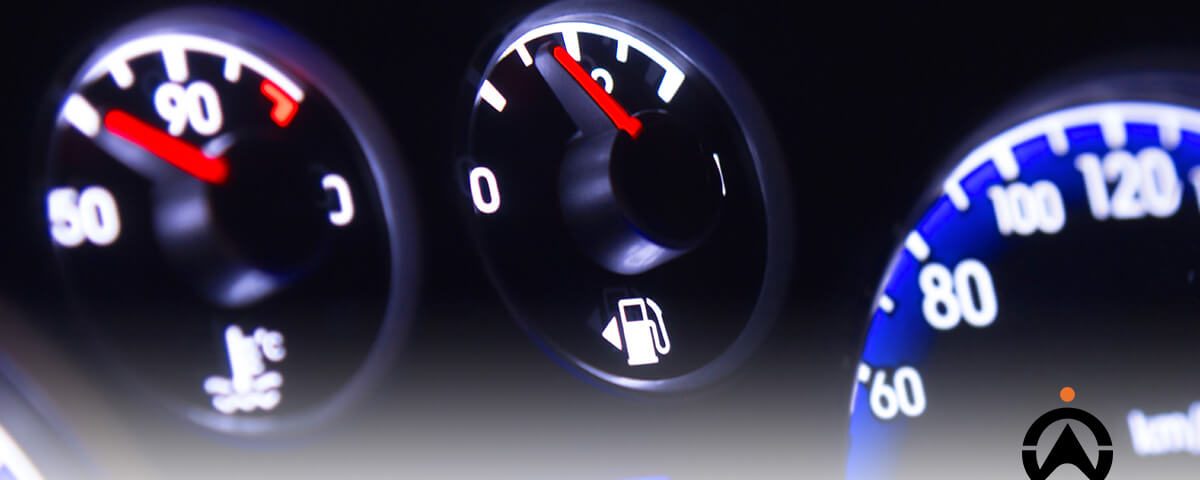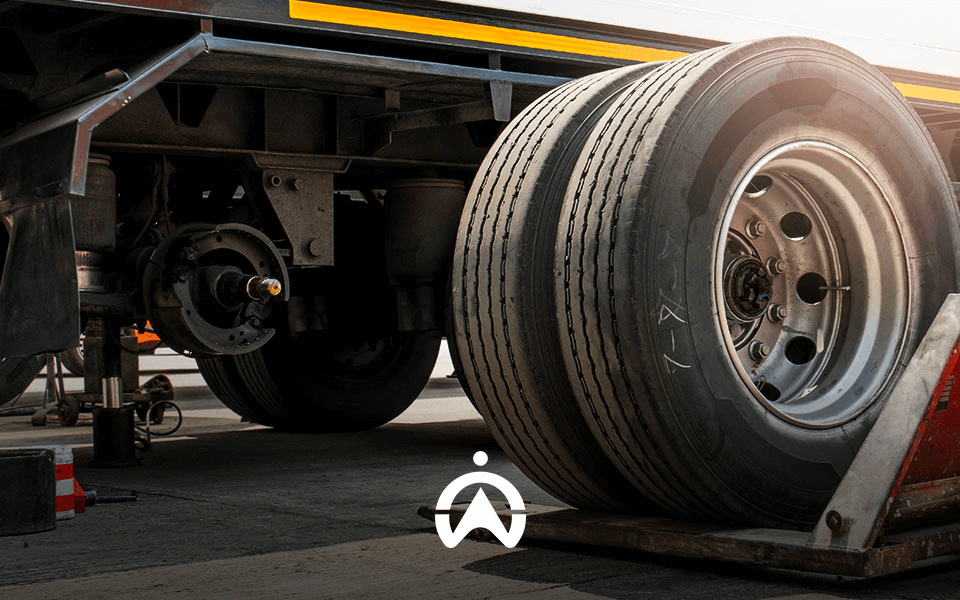What Is Hypermiling and Can It Save Your Fleet Money?
Up to 60% of a company’s fleet operating budget is spent on fuel. In light of the continuous increase in fuel prices, fleet fuel costs are only expected to increase. Fortunately, fleets can reduce fuel costs through the use of safe hypermiling and Cartarck’s solutions and software.
What exactly is hypermiling?
As petrol prices increased in the early 2000s, drivers in the United States needed relief from the financial burden of fuel expenses. To find a solution, drivers invested in fuel-efficient cars (the likes of the Toyota Prius) to save on fuel use and fuel costs. To achieve additional fuel efficiency, drivers began adopting techniques aimed at further decreasing fuel usage — known as hypermiling.
Hypermiling (or eco-driving) can be explained as an intentional driving technique that maximises fuel efficiency to minimise fuel costs. For hypermilers, hypermiling is a lifestyle – from MPG (miles per gallon) events, to incorporating regular driving habits that help maximise fuel economy and in turn reduce gas emissions, whether you are driving a personal Toyota Prius or business TATA Ace.
With high petrol and diesel prices showing no sign of dropping anytime soon, fuel costs will continue to strain fleets. Learning about hypermiling, its techniques, tips and benefits is essential to save your fleet bank… so here we go.

Top 10 common hypermiling techniques for your fleet
The main activity of a fleet is driving from one point to another. Some fleet businesses may have vehicles used for short, local trips, while others may have long-haul trucks that cover thousands of kilometres (or miles) per month. Hypermiling techniques are a set of driving practices implemented by drivers to increase vehicle fuel efficiency to reduce fuel consumption and fuel costs.
Here are 10 common hypermiling techniques that you can easily implement in your fleet:
- Drive at a constant speed:
Slow and steady driving speed maintains vehicle engine efficiency and significantly reduces fuel consumption. This technique can be especially useful on highways and long trips where driving conditions are usually stable.
- Avoid idling:
When a vehicle is idle, the engine is running while the vehicle is not moving. This consumes unnecessary fuel. Each time idling occurs, you lose 3.5 litres of fuel per hour for a bus, 3 litres per hour for a medium-heavy truck, and 1.5 litres per hour for a large sedan. Turning off the engine when the vehicle is idle at traffic lights, while in traffic, or when parked will save you loads of fuel.
- Coast through:
Coasting refers to driving with the vehicle in neutral or the clutch disengaged. This allows the vehicle to ‘coast’ without the use of fuel. This technique is useful when driving downhill or approaching a stop sign or red traffic light.
- Use engine-off-coasting:
A step further from coasting is engine-off-coasting. This technique involves turning off the vehicle’s engine while coasting in neutral or with the clutch disengaged when driving downhill or approaching a stop sign or red traffic light. While engine-off coasting can save even more fuel than normal coasting, it is important to note that it requires advanced driving skills and should be used with caution, as it can be dangerous if not done correctly (and some vehicles may not allow the engine to be turned off during motion).
- Avoid hard acceleration and sudden stops:
Fuel consumption can be increased by up to 40% due to harsh acceleration or braking.This technique involves avoiding rapid acceleration and harsh braking by anticipating stops, as well as frequent speed changes and sudden lane changes. By accelerating and braking smoothly, and maintaining a steady speed, the fleet can save fuel, reduce emissions, and prolong the life of vehicles.
- Maintain proper tyre pressure:
If vehicle tyre pressure is not maintained within the recommended range, the vehicle must work harder to move forward. This results in increased rolling resistance and fuel costs. Therefore, this technique is crucial to improve fuel efficiency, which in turn saves money on fuel costs.
- Reduce vehicle weight:
This technique is simple — get the junk out of the trunk. The heavier the car, the more fuel it uses to move around. If you are not in the supply chain industry you could avoid travelling with heavy loads. Removing unnecessary items or equipment from your fleet vehicles can reduce vehicle weight, improving fuel efficiency.
- Avoid air conditioning and other electrical loads:
Using air conditioning, headlights, and other electrical loads can increase fuel consumption. However, they may be necessary in certain situations, such as hot weather conditions or when driving at night. Even in these necessary times, fuel can still be used efficiently by driving at lower speeds to reduce fuel consumption, as air conditioning and other electrical loads tend to consume more fuel at high speeds.
- Plan routes ahead:
This is one of the basic hypermiling techniques that involves planning the most efficient route from point A to point B to minimise unnecessary stops, traffic, and fuel consumption.
- Avoid traffic congestions
Avoid congested areas or busy intersections during rush hour, as this can lead to fuel wastage from frequent stops and starts. Instead, optimise routes by taking alternative routes or driving during off-peak hours when possible.
Hypermiling can’t be bad, can it?
So you may already be wondering: It’s good for my wallet but is it good for my car?
If hypermiling is about being mindful of your driving habits, using your vehicle well, and reducing the strain placed on components like the brakes, suspension, and engine, then it should be good for your car and safe, right?
Well, hypermiling has both positive and negative effects depending on how cautiously it is implemented. On the positive side, hypermiling can significantly improve your fuel economy — meaning you can travel long kilometres (or miles) on a small amount of fuel. This not only means you save money on fuel costs but also increases vehicle longevity and reduces accident risks by promoting safer driving habits like avoiding aggressive driving.
On the negative side, some hypermiling techniques can be dangerous, violate traffic laws or put other drivers at risk. For example, in South Africa it is illegal to coast with the engine switched off, as this is considered dangerous and can cause the driver to lose control of the vehicle. On the other hand, coasting in neutral with the engine still running is not illegal as long as it is done safely and does not pose a risk to yourself and other road users. Additionally, some hypermiling techniques such as drafting and overinflated tyres may cause excessive wear and tear on the vehicle, leading to costly repairs or reduced safety.With this said, hypermiling can be a beneficial practice to save fuel and promote safer driving habits within your fleet. But it is important to implement these techniques safely and within the boundaries of the law to avoid putting the fleet and other road users at risk.

Hypermiling safety tips for your fleet
While hypermiling techniques can help you save money on fuel and reduce your carbon footprint, it’s still necessary to remember that safety should always be your top priority on the road. Here are some hypermiling safety tips:
- Keep a safe distance between other cars: While practising hypermiling (such as coasting and slow speed) it is crucial to keep a safe following distance from other vehicles (in front and behind if possible). This will give you the time and space you need to avoid sudden changes in traffic and reduce your risk of a collision.
- Avoid sudden braking or acceleration: When hypermiling, it is important to anticipate stops or slow-moving traffic ahead of time to gradually avoid sudden braking or accelerating or putting extra strain on your engine.
- Stay alert and focused: Stay alert and focused by eliminating distractions such as cell phone use, eating, or adjusting the radio while driving, and always be aware of your surroundings on the road.
- Obey traffic laws: Whether avoiding fuel waste to save money or driving normally, it is important to comply with traffic laws, such as not exceeding speed limits and running red traffic lights, or making unsafe lane changes.
By following these tips, you can practise hypermiling safely and enjoy the benefits of increased fuel efficiency without putting yourself or other drivers at risk.
What’s in it for the fleet? Benefits of hypermiling
By implementing safe hypermiling techniques and tips, fleets can save significant fuel costs, increasing profitability. But that’s not all, here are some of the other benefits your fleet can reap from implementing hypermiling techniques and tips:
- Reduced fuel consumption and costs: Hypermiling safely and implementing fuel-efficiency tips will reduce fuel consumption and fuel wastage which results in lower fuel costs.
- Extended vehicle lifespan: With vehicle maintenance tips and safe driving habits, fleet vehicles will experience less wear and tear, reducing the need for frequent repairs and maintenance, resulting in a longer vehicle life cycle.
- Enhanced safety: Safe hypermiling practices such as maintaining a safe distance from other vehicles, adhering to speed limits and anticipating traffic can enhance your fleet’s safety and reduce accident risks.
- Improved driver behaviour: Hypermiling requires disciplined and focused driving behaviour, which can translate to improved driver behaviour overall and lead to a safer and more efficient fleet.
- Positive environmental impact: By implementing hypermiling techniques and tips you will reduce your fleet’s fuel consumption which produces less carbon emissions, contributing to a more positive environmental impact for the business’s community.

Can hypermiling save your fleet money?
In a nutshell, yes — especially with Cartrack’s fleet management software. With the help of our fleet management software and solutions, you will not only save your fleet money but also time and other fleet-related expenses by:
- Managing fuel costs and fuel consumption
To reduce fuel usage and costs in your fleet, it is essential to optimise fuel consumption. But how so? Our AI fuel monitoring software helps you manage fuel costs by matching fuel receipts with your vehicle’s location and fuel status to immediately alert you of any potential fraudulent activities, such as fuel card fraud. Additionally, monitor fuel usage with the help of our trip reports that incorporate fuel sensor data to identify abnormal increases in fuel consumption and easily validate any fuel misuse suspicions so you can use less fuel and therefore spend less money on fuel.
- Maintaining vehicles on time
A well-maintained fleet will save you money on downtime and prolong vehicle life. Using Cartrack’s real-time vehicle diagnostics and automated preventative maintenance schedules, you can make sure your vehicles are properly maintained so that they operate more efficiently, costing you less in fuel and maintenance by avoiding unexpected repairs and breakdowns, and reducing downtime.
- Ensuring correct tyre pressure
Driving with underinflated tyres can be costly, as it can waste fuel and increase fuel consumption by up to 8%. Regularly checking your tyre pressure and ensuring it is at the correct level can help you save money on fuel costs. You can easily check your tyre pressure by getting air from the fuel station or using your own inflator. If your tyres are already damaged, you can still save money with Cartrack’s unbeatable deals on premium tyres from top brands and fitment centres, available on the Cartrack app.
- Optimising your routes
Optimising routes saves time and fuel, increases productivity and provides a competitive edge through quick turnaround times to customers. By using Cartrack’s routing software application, you can automatically allocate jobs to your employees and optimise them based on the quickest route or by job priority for faster turn-around times. Our route optimisation also provides real-time alerts for route deviations, ensuring vehicles stay on the planned route. By doing so, fuel costs can be reduced, while fuel efficiency and productivity increase.
- Improving driver behaviour
The way people drive significantly impacts fuel efficiency. Poor driver behaviour such as harsh acceleration and braking, speeding, and idling can waste a considerable amount of fuel. While on the other hand, sticking to speed limits, accelerating and braking gradually, and turning off the engine when not in use, can improve your fleet’s fuel economy by up to 15%–30% on highways and 10%–40% in stop-and-go traffic. Cartrack provides an easy way to establish a safety-first culture within your team through driver scorecards that track high-risk behaviour (such as speeding, harsh acceleration, cornering or braking) which impacts fuel consumption. Addressing these behaviours will reduce your fleet’s fuel usage and costs while also quickly pinpointing and addressing any fuel drainages in your fleet.

Eliminate high fleet fuel costs with Cartrack
If you are looking for a simple and effective way to take your fleet’s fuel efficiency to the next level, look no further. Cartrack has the software and solutions to help you significantly cut down on your fleet’s fuel costs. Contact us today!




